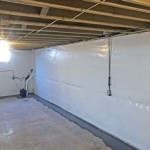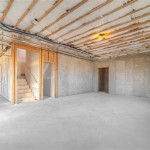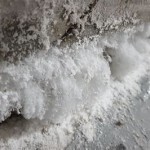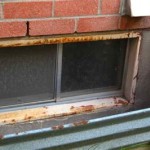What To Use To Seal Basement Walls
Water seepage is a common problem for many homeowners, especially those with basements. Water can enter through cracks in the foundation or walls, causing a variety of problems, including mold, mildew, and structural damage. If you're dealing with water seepage in your basement, it's important to seal the walls to prevent further damage.
There are a number of different materials that can be used to seal basement walls, including:
- Concrete sealers are a type of paint-like material that is applied to the walls of the basement. They form a waterproof barrier that prevents water from seeping through.
- Epoxy coatings are another option for sealing basement walls. They are more durable than concrete sealers and can withstand higher levels of water pressure.
- Hydraulic cement is a type of cement that is mixed with water to create a waterproof paste. It can be used to patch cracks in the walls or to create a waterproof barrier over the entire surface of the walls.
- Basement waterproofing membranes are a type of plastic sheet that is applied to the walls of the basement. They create a waterproof barrier that prevents water from seeping through.
The best material to use for sealing basement walls will depend on the specific conditions of your basement. If you're not sure which material to use, it's best to consult with a professional.
Once you've chosen a material, the next step is to prepare the walls for sealing. This involves cleaning the walls and removing any dirt or debris. You may also need to patch any cracks in the walls before sealing them.
Once the walls are prepared, you can apply the sealant according to the manufacturer's instructions. Be sure to apply the sealant evenly and in multiple coats to ensure a waterproof seal.
Once the sealant has dried, your basement walls will be protected from water seepage. This will help to prevent mold, mildew, and structural damage, and will make your basement a more comfortable and healthy place to spend time.
Additional Tips for Sealing Basement Walls
In addition to using a sealant, there are a number of other things you can do to help prevent water seepage in your basement, including:
- Install a sump pump. A sump pump is a device that pumps water out of the basement when the water level gets too high. This can help to prevent flooding and water damage.
- Clean gutters and downspouts. Clogged gutters and downspouts can cause water to overflow and seep into the basement. Be sure to clean them regularly to prevent this from happening.
- Grade the soil around your home. The soil around your home should be graded so that it slopes away from the foundation. This will help to prevent water from pooling around the foundation and seeping into the basement.
- Seal any cracks in the foundation. Cracks in the foundation can allow water to seep into the basement. Be sure to seal any cracks as soon as possible to prevent water damage.
By following these tips, you can help to keep your basement dry and free of water damage.

How To Waterproof Basement Walls With Flex Seal Products Youtube

Waterproofing Basement Walls Dos And Don Ts To Remember Bob Vila

How To Waterproof Basement Walls From Inside Sani Tred

Sealing Basement Walls And Floors Hgtv

Waterproofing Basement Walls Dos And Don Ts To Remember Bob Vila

How To Waterproof Your Basement True Value

Exterior Basement Waterproofing You Get A Free Estimate Wall Solutions By Olshan

How To Insulate A Basement Wall Greenbuildingadvisor

How To Waterproof A Basement Easy Video Installation Guide Sealonce System Com

Diy Basement Waterproofing Tips In Gaithersburg Md








